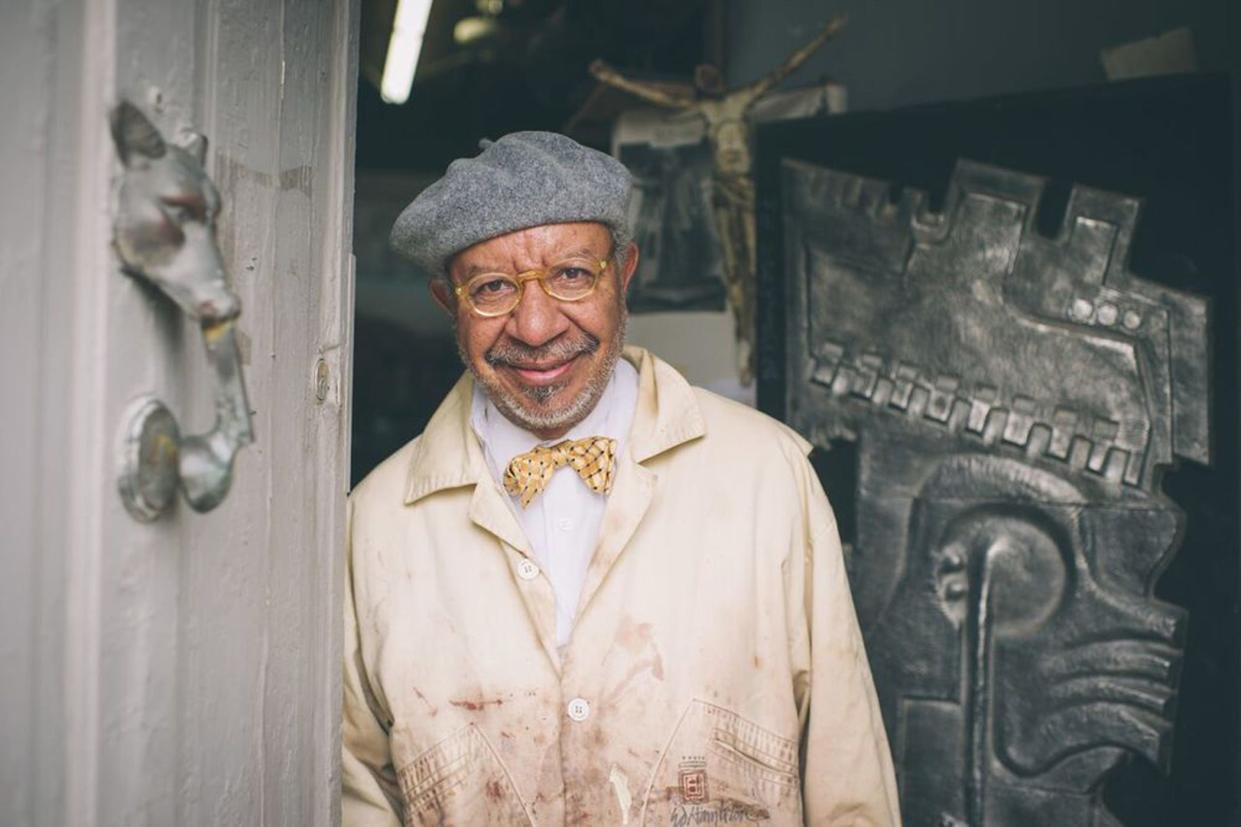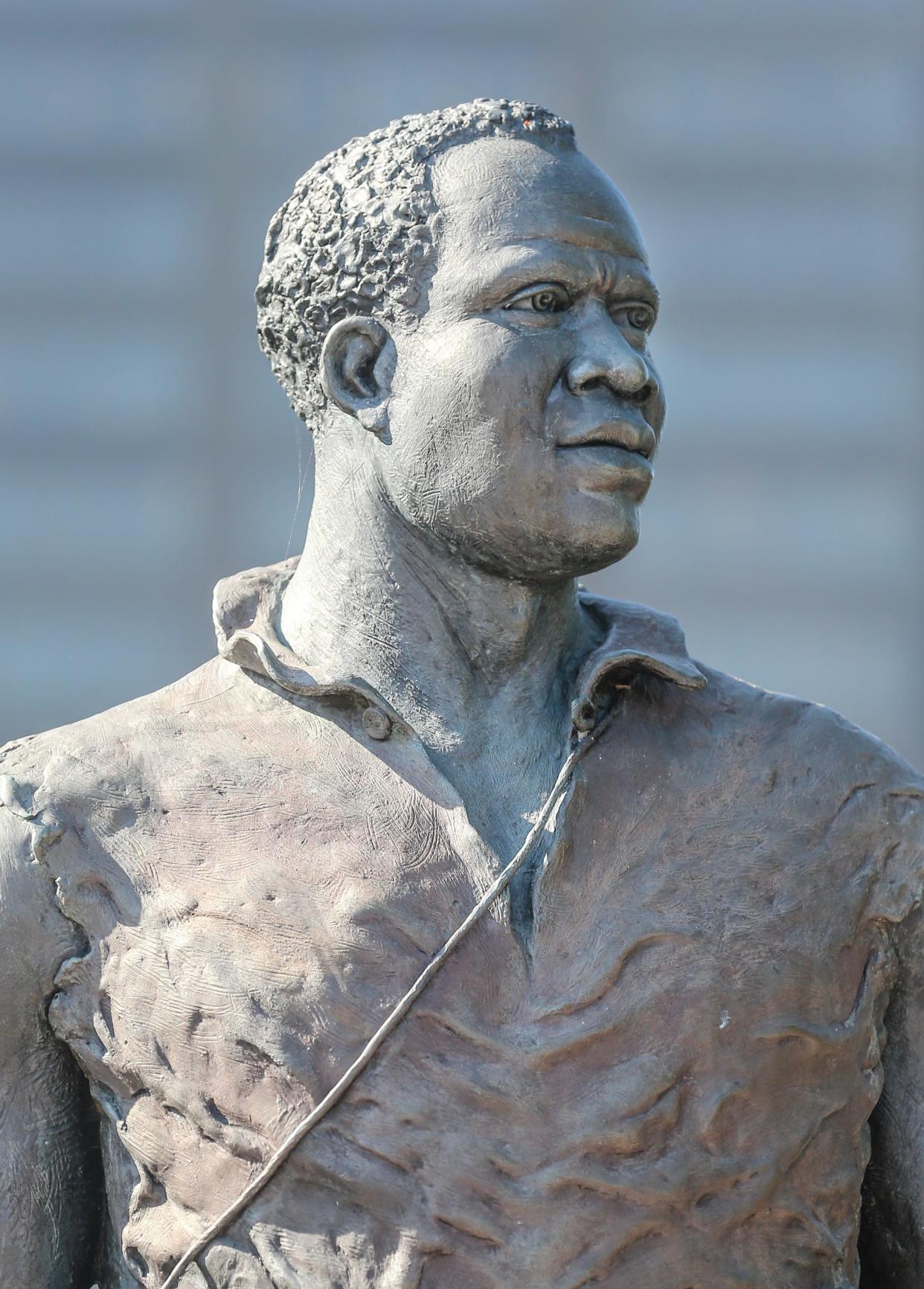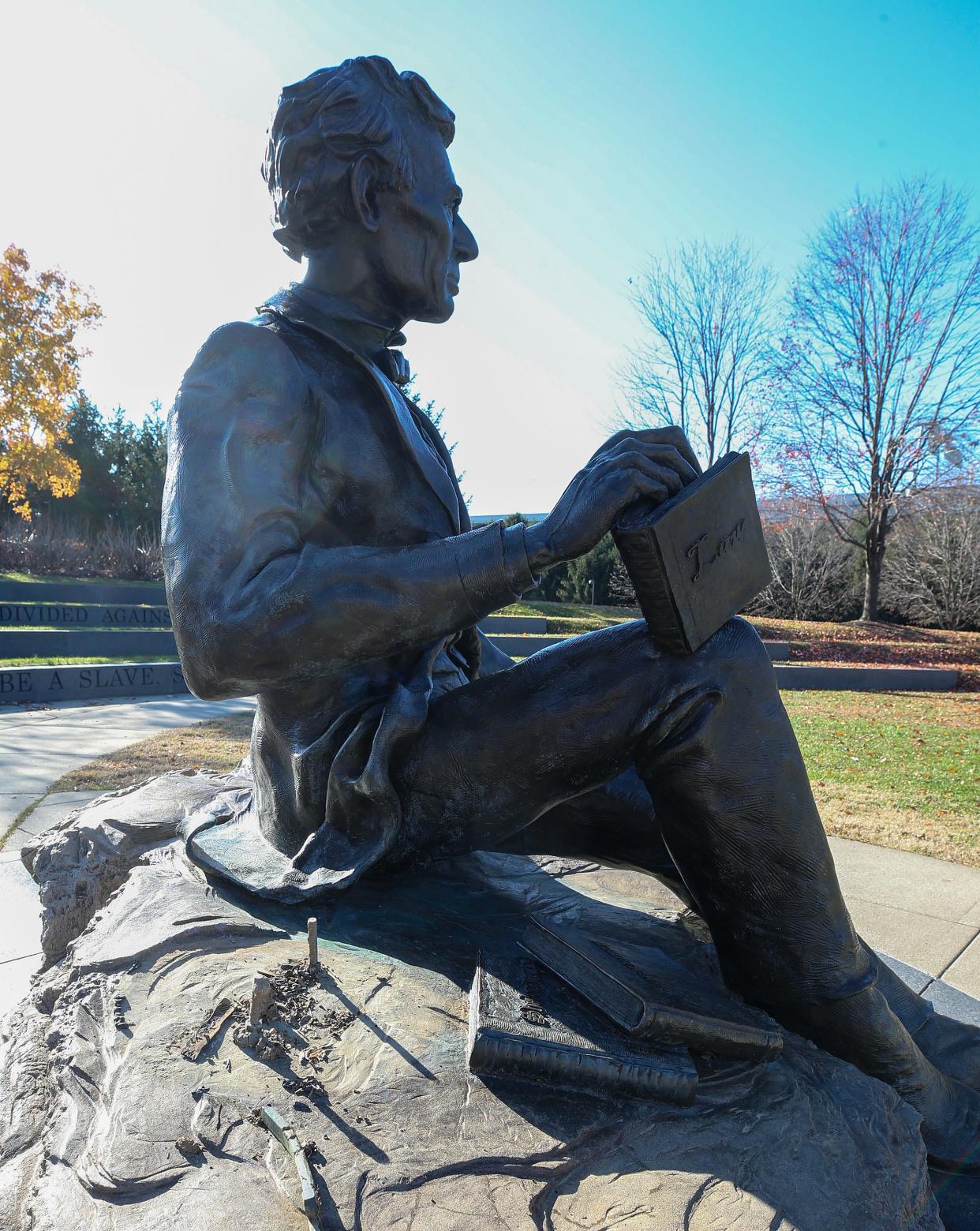Gerth: Ed Hamilton's statues have immortalized some of the nation's greatest. Who will make his?

The middle of last month, sculptor Ed Hamilton joined the family of David Jones Sr. to unveil the statue of the Humana founder in downtown Louisville — a life-size bronze the family had commissioned.
It’s the fourth major piece Hamilton, perhaps Louisville’s greatest visual artist ever, has installed in the city and one of at least ten he has sculpted in the United States.
When a friend questioned on social media whether Jones was worthy of Hamilton’s efforts, it got me thinking about who in Louisville’s history is worthy of such an honor.
Perhaps Louis Brandeis, the first Jewish member of the U.S. Supreme Court, who grew up on East Broadway. He’s got a bust at the University of Louisville where the law school is named for him, but nothing large.
Or Georgia Davis Powers, the first woman and first African American in the Kentucky State Senate.
Maybe one of the Binghams who built a media empire here and then after they sold it, used much of the money from the sale for the public good. Perhaps a musician like Lionel Hampton, who was born here, or social justice advocates Anne and Carl Braden?
Some will certainly argue that Mitch McConnell should be cast in metal when he dies — but his statue will likely go in the Kentucky Capitol in the spot where Jefferson Davis once stood. I’m surprised no one has begun raising money to commission of statue of Denny Crum for the plaza in front of the KFC Yum! Center.
But the one name I kept coming back to is Hamilton himself.
When I asked him if one day he thought a sculpture should be made of him and if so, what artist should be commissioned to sculpt it, Hamilton told me it's too soon to talk about whether he deserves a statue. He's still alive and hopes he'll be around for a lot longer.
Me too.
But if it were up to me, I’d be reserving a spot for his statue somewhere in the Phoenix Hill neighborhood where he’s had his studio for more than 40 years or maybe somewhere along Muhammad Ali Boulevard where he spent his youth.
What could be more fitting than to honor the man who has done so much for public art in Louisville?
“Personally, I don’t care,” he said. “Unless somebody sees it as important, that’s fine. I’ve had my banner, I’ve had my accolades. I’m happy with that.”
But a statue of Hamilton would be fitting for an artist of his stature who wasn’t recognized for his talent in his hometown until after he was hired to create a monumental statue of Booker T. Washington for Hampton University in Virginia in the early 1980s.
Next came Joe Louis, the great boxer known as “the Brown Bomber,” in Detroit.
“They never recognize you because you’re a homeboy,” Hamilton said. “But the minute you hit that national scene, oh, my God. It’s like ‘He’s the man.’”

Finally, in 1991, Hamilton was commissioned to build a monumental-sized sculpture in Louisville, a 12-foot-tall pair of boxing gloves that come together to form a heart, to honor Louisville’s boxing tradition and children in the Smoketown neighborhood.
Since then, he’s constructed large-scale sculptures in New Haven, Connecticut; Newport News, Virginia; Charlotte, North Carolina; Danville, Kentucky; and Washington D.C.
“Washington D.C. is a city of monuments,” he said. “If you’re a sculptor and you don’t have a statue there, you ain’t done nothing.”
Most of his large works honor African Americans or people who have been instrumental in the fight for civil rights. His 12-foot statue of Abraham Lincoln sitting on the bank of the Ohio River in Waterfront Park, is likely his best-known piece locally.
He also built the sculpture of York, the Black man who was instrumental in the Lewis & Clark Expedition, that sits on the Belvedere.
Right now, Hamilton, 77, is working on a sculpture of Kentucky native and U.S. Supreme Court Justice John Marshall Harlan, best known for his lone dissent in the case of Plessey vs. Ferguson, the horrid case that reaffirmed racial segregation in the country. That statue will go on the campus at Centre College, where Harlan went to school.
He’s also working on a life-size statue of Paul Laurence Dunbar, the famed African American poet, for Dunbar’s hometown of Dayton, Ohio.

When I asked Hamilton whose statue he’d like to sculpt in Louisville, the first thought that came to mind was Alberta Jones, the first Black woman to pass the bar in Kentucky and the first woman appointed as a city attorney, who was murdered in 1965 at just 34 years old.
“There aren’t enough women,” he said. “It seems like so many statues are of old, dead, white men.”
He’d also like to see statues in Louisville honoring former State Rep. Mae Street Kidd and former Alderwoman Lois Morris. Both were leaders in the civil rights movement. And maybe Helen Humes, the jazz singer from Louisville who toured with Count Basie.
And he said, one day, the city should probably erect statues of Owsley Brown II, the late former CEO of Brown-Forman, and his wife, Christy Brown.
“They’ve done so much for this city,” he said.
But back to Hamilton and the statue of him that should be erected many years from now after, as he suggests, he’s dead.
Who should do the work?
Raymond Graf, whose life-size statues of everyone from Pat Day to Catherine Spalding to Al Schneider to Pewee Reese litter the city, and who, like Hamilton, was once mentored by the great Barney Bright?
Or maybe Matt Weir, who once worked at the Bright Foundry and has created both realistic and abstract pieces in and around Louisville? Or what about William Duffy, Hamilton’s longtime friend who specializes in more abstract art?
Whoever it is, they better be local.
Hamilton has long advocated for local artists and once lectured former Speed Art Museum director Franklin Page about where to find good art.
“When are you going to start looking for art here in Louisville? You don’t have to go to New York and Chicago to find good artists,” he recalled saying. “We got plenty of good artists right here.”
But don’t start talking about it yet.
“You can talk about that when I’m dead.”
Joseph Gerth can be reached at 502-582-4702 or by email at jgerth@courierjournal.com.
This article originally appeared on Louisville Courier Journal: ed-hamilton-statues-who-should-make-hamiltons-statue
